|
|
|
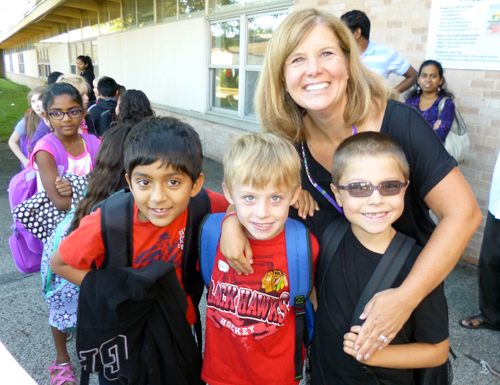
From the Superintendent
As our communities continue to evolve, our mission remains clear.
The 2015-16 school year is off to a robust start here in District 15! This year, we opened the doors to nearly 12,000 students, as well as faculty, staff, and our thousands of families, to the promise a new school year brings.
Each summer, in preparation for the beginning of school, District 15's Board of Education and its Leadership Team return to the District's guiding principles to review and reexamine Board and District goals, as well as to plan the work for the coming year. Of course, this compels the renewal of our commitment to the District's mission: to produce world-class learners by building a connected learning community.
Our communities and families are more dynamic, more diverse than ever. In response, our goals need to be as vigorous and varied as possible. Our before-, during-, and after-school programming needs to be creative and adaptive. Take, for example, our C.A.R.E. (Children's Activity, Recreation, and Enrichment) program. In partnership with the Palatine and Rolling Meadows Park Districts, it is expanding to fill the needs of our families, as well as extending a school's reach into its neighborhood by offering an extended school day complete with academic, creative, and physical outlets for its participants.
In alignment with our mission, District 15 has launched a comprehensive review of its curricula in order to provide forward-thinking, future-focused education to our students. In addition to the yearlong math pilot program (which will choose the most effective math curriculum for the future), the District will also highlight the science curriculum via the Next Generation Science Standards.
The District continues to explore a variety of academy school concepts in order to adapt to the changing educational needs of our community. Included in our exploration of evolving academics, the District is investigating ways to implement full-day kindergarten and to expand our preschool program. Additionally, expansion of our extracurricular offerings is among the highest priorities in order to extend learning beyond the school day, and even beyond traditional curricula.
As District 15 actively seeks to elevate its academic, creative, and physical programming, connection and communication with stakeholders becomes of the utmost importance. To that end, exploring options to enhance all communication opportunities will be a necessity for the District in 2015-16.
Working toward the achievement of these goals, we, as District 15 stakeholders, must renew our commitment toward "building a connected learning community." We must all work together to adapt to the changing needs within the schools and throughout the neighborhoods that comprise this great school district.
By doing so, we will realize that our many different backgrounds and life experiences can strengthen our shared commitment to "produce world-class learners," and help our children more fully realize the promise of a public education.
Thank you for doing your part to fulfill the promise that this new school year presents by supporting District 15 and its wonderful schools. Have a great school year! 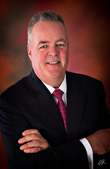
Sincerely,
Scott B. Thompson, Ed.D.
Superintendent of Schools
|
| Balances, Bonds, and Building Maintenance
The District 15 Board of Education has begun to discuss how the District should fund its highest-priority life safety projects.
Last year, District 15 conducted a new 10-year life safety study that identified approximately $119 million of facility repairs and renovations that the District must complete over the next decade.
This summer, the District 15 Board of Education adopted the District 15 Facilities Plan Committee's recommended strategy to accomplish the life safety report's requirements.
This year, District 15 is taking the first step recommended in that strategy, and completing a plan to schedule and fund all of the District's most urgent facilities needs. Current estimates project these improvements, which must be completed within the next two years, to cost the District $21.6 million, but prices for such projects are always a moving target. Many factors can influence the bottom line, and the Board began studying these different scenarios during its recent discussion on the options that are available to fund the $20 million to $25 million of capital improvements that the District will soon be undertaking.
Essentially, there are three options available to the District. Each of those options presents a multitude of possibilities for the Board to consider.
Fund Balance
The District's fund balance at the end of this year is projected to stand at $52 million, which is roughly 34 percent of its operating budget. The District could cover the cost of these projects with its cash reserves, and avoid a slight increase to residents' property taxes.
However, doing so could jeopardize the District's day-to-day operating capacity and its long-term financial stability. The District aims to maintain a 35 percent fund balance to ensure it always has enough cash on hand to meet its financial obligations. For instance, Cook County is sometimes late sending the District its semiannual installments of property tax revenues, which account for approximately 80 percent of the budget. In such instances, if the District's cash flow runs out, it must take short-term loans and pay interest on them, which compounds the budget challenges it is already facing.
Additional budget challenges could be on the horizon, too. For instance, proposed legislation would freeze property taxes for two years, limiting the total amount of revenue available to the District. The District could also lose an estimated $9 million a year in state aid if a proposal to redistribute the state's current pool of resources passes. And, of course, the state's pension reform efforts could still have a dramatic impact on the District's bottom line, as the Illinois Supreme Court ruled this spring that the General Assembly's pension reform legislation was unconstitutional in its entirety, and invalidated the entire piece of legislation.
Bonds
Issuing life safety bonds to cover the cost of these projects would not impact the District's day-to-day business or its long-term financial standing. Tax dollars that have already been collected primarily for the purpose of funding classroom operations would still be used for teaching and learning. Instead, the cost of these projects would be covered by a small tax increase that would span the life of the improvements and be paid for by those benefitting from them over the next 10 to 20 years.
Presently, the District 15 Administration favors this course of action, which would not require a referendum-only Board approval.
The size of the property tax increase that would result for a life safety bond sale would vary depending on such factors as the amount of bonds issued, interest rate levels, property values, and the number of years it takes the District to retire the debt. To illustrate how the moving parts of bond issues interact, financial advisors from William Blair and Co. calculated two different $21 million life safety bond issuance scenarios for the Board to review-one with a 10-year debt retirement schedule, and one with a 20-year schedule. The shorter schedule's estimates show the projects costing the owner of a $250,000 home an additional $606 over the course of 10 years, while the longer schedule's estimates show the projects costing the same homeowner an additional $798 over 20 years.
Fund Balance and Bonds
The third option would be to combine the first two options and fund the projects with cash reserves and a small tax increase resulting for the sale of some life safety bonds. This would, of course, work like any car loan or home mortgage scenario, where the "down payment" from the District's fund balance can reduce the amount of the bonds, and/or the years it will take to retire them, thereby decreasing the size of the tax increase absorbed by residents.
That, of course, is why there are no hard and firm numbers to attach to these projects and funding scenarios at this time-only estimates that will be refined as time passes, decisions are made, and work is bid and completed.
All of these estimates and options will, however, be studied and discussed by the Board, the Administration, and the District 15 community over the coming weeks and months with the goal of having a plan in place by spring to schedule and fund all of the District's most urgent facilities needs.
|
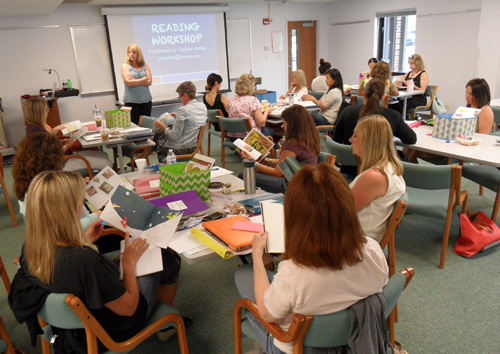
What 'Lazy-Hazy-Crazy Days of Summer?'June, July, and August remain busy months for District 15 educators.
The Department of Instruction, as well as our principals and teachers, once again turned the term "summer break" into a misnomer here in District 15.
Each summer, many of them spend much of the break serving our students through our Summer Early Literacy Academy and our Summer Blast programs. Many also use this time to work toward improving instruction by completing additional coursework or taking advantage of professional development opportunities offered by the Department of Instruction.
Below are some of the ways that our principals and teachers remained busy this summer as they prepared for the arrival of the 2015-16 school year:
Math Pilot
Perhaps the most high-profile of the many preparations for the coming school year are those related to the District's math pilot. District 15 has not had a full-scale math materials adoption in 12 years. Since then, the state has adopted the Common Core state standards for math, and they require the teaching of more rigorous math practices than the 1997 Illinois Learning Standards that were in use 12 years ago.
These are the required key math practices that students across all grade levels will be expected to develop proficiency in under the Common Core: - Making sense of problems and persevering in solving them
- Reasoning abstractly and quantitatively
- Constructing viable arguments and critiquing the reasoning of others
- Modeling with math
- Using appropriate tools strategically
- Attending to precision
- Looking for and making use of structure
- Looking for and expressing regularity in repeated reasoning
Now that Illinois has adopted the Common Core State Standards, and our math teams have written curriculum manuals to guide teachers' instruction, it is time to pilot teaching materials to support these changes.  To that end, the following two math programs will be piloted and evaluated in 148 classrooms in 19 schools this school year: Envision Math and Go Math. These programs are research based. They have been met with high praise by our colleagues in other districts who are currently using them. They are available in both English and Spanish, and they are aligned with the District's cultural, linguistic, and assessment needs. Both programs offer daily enrichment and intervention activities to address the various needs of students in our classrooms.
Piloting teachers have received professional development training this summer and will have "check-in" trainings with the publisher during the school year. Additionally, online note-taking guides, chat forums, and question-and-answer sessions will guide teachers and prevent them from having to wait for the next training session to get their questions answered.
Teachers implementing both programs will be meeting in person, as well as online, via Google Classroom to systematically evaluate the pros and cons of each of the programs, and will be providing feedback to the Administration. The Administration will then recommend a program for adoption at the April 2016 Board of Education meeting, and full, District-wide implementation will occur in the fall of 2016.
If you have questions about the math program pilots in your school, please contact your child's teacher or principal.
CHAMPS (Safe and Civil Schools)
This summer, 25 administrators became CHAMPS trainers. CHAMPS is a positive, research-based approach to classroom management. It is designed to assist principals in helping teachers develop a classroom of students who are respectful, responsible, motivated, and highly engaged in meaningful tasks. The CHAMPS approach helps teachers make the most of the time they have with students, and it stresses the importance of building positive relationships with students to maximize both their achievement and social-emotional well being.
Principal Leadership Series
Over the course of four days, principals participated in a series of nearly 20 hours of professional development workshops designed to hone their skills as their schools' instructional leaders. During these workshops, they learned how teachers' use of ongoing (non-graded) assessments and checks for understanding can help them determine when groups of students are in need of re-teaching, are ready to move on to advanced concepts, or require a differentiated approach to instruction to address their learning goals. This work will continue with our teachers during the District's weekly professional development activities this fall and winter.
Co-Teaching
In July, a group of junior high classroom teachers, reading specialists, special education teachers, and teachers of English Language Learners, along with junior high school and District administrators, participated in a workshop to support the implementation and sustainability of co-teaching practices. Co-teaching is an instructional model that addresses the unique learning needs of students by partnering teachers with varying areas of expertise. Through a well-planned, systematic approach, co-teaching provides opportunities to enhance instructional strategies for improved outcomes for students with diverse learning profiles.
Inclusive Practices
Each summer, general education and special education teachers participate in a professional development activity on inclusive practices for students with disabilities. Presented by veteran special education teachers, attendees learn about the philosophy of inclusion and methods for implementing appropriate inclusive practices in the classroom.
Summer Literacy Institute
Each year, shortly after school is dismissed for the summer, the Department of Instruction offers a Summer Literacy Institute. This year's institute, which was titled Readers Workshop in the Elementary Classroom, was presented by literacy consultant Colleen Mullins. Readers workshop is a research-based organizational structure for reading instruction, and the 53 teachers from Grades 1-6 who attended the institute spent a day learning new methods for organizing their reading instruction and maximizing their instructional time. Participants received valuable resources to assist them in planning for the new school year. |
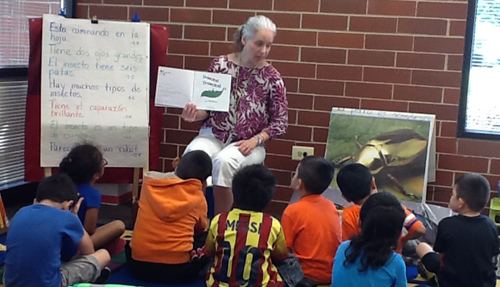
SELA works!
District 15 helps both English- and Spanish-speaking emergent readers retain literacy skills by adding seven bilingual sections to its Summer Early Literacy Academy.
District 15 launched its Summer Early Literacy Academy (SELA) in the summer of 2011 as a way to reach out to its emergent readers who need continued support over the summer months. In each of its first three summers, the program served between 100 and 150 at-risk early readers from all 15 of the District's elementary schools.
Last year, though, SELA also piloted two bilingual sections that provided young English Language Learners (ELL) with valuable literacy instruction in Spanish. Those classes proved so successful that the District added seven more bilingual sections this year, bringing the total number of SELA classes to 20 and the total number of SELA students to approximately 250.
"Whether their native language is English or Spanish, SELA is helping our youngest readers continue their literacy growth over the summer break," said Cheryl Wolfel, Ed.D., District 15's Director of Second Language Programs.
SELA targets students who have just completed kindergarten and first grade, and it is taught by reading specialists or teachers with strong backgrounds in literacy, as well as reading intervention program assistants. The District designed SELA to serve as a continuation of the reading intervention programs the District offers to its emergent readers when they encounter struggles during the regular school year.
SELA's low student-to-teacher ratios ensured that each of the students invited to attend the academies received plenty of individual attention throughout the day. Instruction at the academies focused on the continued development of the students' oral language and basic literacy skills, such as identification of letters and sounds, sight words, and skills and strategies for reading and writing.
"In the short term, the aim of the academies is to maintain the growth in literacy that the students made during the prior school year," said Lisa Pozzi, a Literacy Facilitator and SELA Director.
Data has shown that many SELA students have not only maintained their reading skills, but also grown in areas such as sight word recognition. Of course, maintaining that growth can have tremendous long-term effects on the students' academic futures.
"This is especially true for so many of our ELL kindergartners and first graders, as they must learn literacy skills within their native languages, as well as in English," noted Amy Schmidt, a Bilingual Literacy Facilitator and SELA Director.
 Not surprisingly, research indicates that summer reading loss is greatest among students who've struggled to develop their literacy skills; they can sometimes lose as much as a quarter of a year of instruction over the break. Cumulatively, these summer reading losses can put struggling readers a full year behind their peers by the time they reach the upper grades.
"The District's hope is that by continuing to provide select students with literacy instruction over the summer break, these academies will help close that achievement gap," Maria McClurkin, Ed.D., District 15's Director of Literacy Programs. |
|
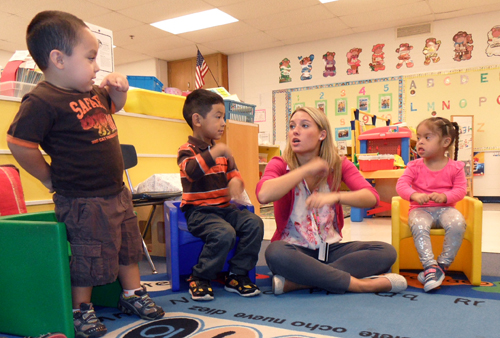
The Importance of Preschool
District 15's early childhood programs provide vital services and enriching experiences that help hundreds of youngsters overcome challenges to learning and establish a foundation for future academic success.
District 15 serves more than 12,000 students, but not all of them are in Grades K-8.
This year, for example, more than 750 preschoolers will be served by the District's early childhood programs, which are offered out of nine locations across the District, including John G. Conyers Learning Academy, the program's headquarters, and the Palatine Opportunity Center.
The importance of these preschool programs can't be overemphasized.
"We know that we improve lifelong learning when we can get kids into preschool," said Scott Thompson, Ed.D., Superintendent of Schools. "They're more likely to complete high school and less likely to be placed in special education. District 15's early childhood programs get more of our students started off on the right foot, something that will pay dividends for the rest of their lives."
District 15's preschool students are primarily served by the following three programs.
Early Childhood Developmental Enrichment Center (ECDEC)
ECDEC is a program for children ages 3 to 5 years old who have been identified as having various risk factors that may contribute to challenges in school. According to the Illinois State Board of Education ...
"At risk children are those who, because of their home and community environment, are subject to such language, cultural, economic, and like disadvantages. They have been determined, as a result of screening procedures, to be at risk of academic failure. A disproportionate share of all children considered to be at risk come from low-income families, including low-income working families, homeless families, families where English is not the primary language spoken in the home, or families where one or both parents are teenagers or have not completed high school. However, neither a child's membership in a certain group nor a child's family situation should determine whether that child is at risk."
The ECDEC program is funded through a state "Preschool for All" grant that covers costs related to staff salaries and equipment, but District 15 provides classroom space and assists with screening.
Early Childhood Special Education
The Early Childhood Special Education program serves children ages 3 to 5 years old with special education needs. These students have identified developmental delays or disabilities in one or more of the following areas: speech and language, social-emotional, motor, or intellectual.
Public school services for children with disabilities are mandated at age 3 and are initiated as soon as possible following the assessment process. The program provides appropriate early education in a secure, accepting environment by working with parents and school specialists to develop an Individualized Education Program (IEP). Each member of the team approaches the child's unique needs with special expertise that is integrated into the goals and objectives established for each child.
Support services are integrated within the classrooms. The child's learning is seen as a dynamic process where the child is an active explorer and initiator. The classroom provides opportunities for interaction and group activities tailored to the individual needs of each child and designed to enhance overall development.
Preschool Integration Program (PIP)
PIP provides a preschool experience for typically-developing 3- and 4-year-old children who reside within District 15's boundaries. This program is unique in that it blends children who have disabilities with children who do not. Classes meet for four half-days a week and give these students a chance to play and learn together in an accepting and challenging environment. This tuition-based preschool experience offers the same type of curriculum that is provided at developmentally appropriate community preschool programs.
Growing Pains
Exploring ways to increase preschool participation, especially among at-risk students, is one of the District's top priorities. However, doing so comes with challenges. Currently, space limitations within the District's schools are constraining the program's growth. In fact, every year, the District maintains a wait list for enrollment in the ECDEC program.
"The sooner we are able to get those youngsters into our schools and into classroom settings, talking to teachers, working on oral language development, the better leveraged they will be for starting kindergarten," said Susan Gehring, District 15's Assistant Superintendent for Student Services. "Students who go to preschool have greater opportunities for progress in math, language, and social skills as they continue their education, and the District's early childhood programs can open up doors for many of our community's preschoolers."
|
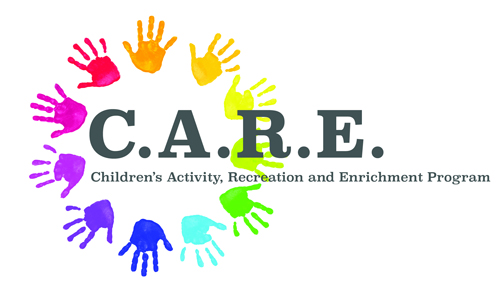 We C.A.R.E. We C.A.R.E.
More working families will benefit from the expanded before- and after-school childcare program sponsored by District 15 and the Palatine and Rolling Meadows park districts.
In our ongoing effort to fulfill our mission to "produce world-class learners by building a connected learning community," District 15 routinely partners with other government entities in the area.
Once such mutually beneficial relationship the District truly values is with our local park districts. We often share each other's fields and facilities, and promote one another's programs. And, of course, we partner to offer the Children's Activity, Recreation, and Enrichment program, or C.A.R.E.
C.A.R.E. is a collaborative venture between District 15 and the park districts of Palatine and Rolling Meadows that provides before- and after-school childcare to students in kindergarten through sixth grade in each of District 15's elementary schools. During the 2014-15 school year, 643 students in District 15 were enrolled in C.A.R.E.
C.A.R.E. demonstrates the positive outcomes that occur for students and their families when strong community partnerships between various governmental entities exist. As with any partnership or program, opportunities for continuous growth and improvement exist. One such opportunity for improvement resides in the number of students who are not eligible to participate in C.A.R.E. due to high interest in the program. These students are placed on wait lists.
"District 15 and the park districts of Palatine and Rolling Meadows are strongly interested in making every effort to reduce wait lists in the C.A.R.E. program for the 2015-16 school year," said Matt Barbini, Ed.D., District 15's Deputy Superintendent of Schools. "Toward that end, additional space for C.A.R.E. has been identified at each elementary school in District 15, and the park districts have increased their staffing to accommodate greater numbers of students this year."
"With that said," continued Dr. Barbini, "we are pleased to announce that children currently enrolled in C.A.R.E. and any child that was on a wait list during the 2014-15 school year will have a space in the program this year."
"Thank you for your understanding, patience, and support as we work to continuously improve opportunities for your child(ren) and family."
For more information, visit the C.A.R.E. page on the District 15 website or contact Cathi Fabjance, C.A.R.E. Program Coordinator, at 847-963-3127 or fabjancc@ccsd15.net.
|
Made in District 15
Once a bilingual early childhood student in District 15, now one of our early childhood teachers, Ruby Dhillon explains the importance of ECDEC, native language literacy, and parent involvement.
Name: Sukhjot "Ruby" Dhillon
District 15 History: Ruby was born in Des Plaines in 1989. A short time later, she moved to India to live with her grandparents. She returned to live with her family in the United States when she was 3 or 4 years old, at which point she entered the Early Childhood Developmental Enrichment Center (ECDEC) in District 15. ECDEC is a program for 3- and 4-year-old students identified as having various risk factors that may contribute to challenges in school. Her experience in ECDEC set the stage for her success at Lake Louise School and Winston Campus Junior High.
Further Education: After she graduated from Palatine High School in 2007, Ruby attended Northern Illinois University, where she earned a bachelor's degree in early childhood education with an emphasis in special education in 2012. Then, in 2013, she earned certification as an English as a second language teacher from National-Louis University.
Current Occupation: Ruby joined the ECDEC staff in District 15 in August 2012, and is serving her fourth year as a lead preschool teacher at Thomas Jefferson School.
In Her Own Words: Last fall, Ruby shared her story during a District 15 Community Breakfast. While her remarks can be viewed in their entirety here, several highlights have been transcribed below: 
- "I lived in India for three years. I was born in Des Plaines, and then I moved to India with my grandparents. I moved back here after I was about 3 or 4 years old, and I attended ECDEC, which is our preschool program here in District 15. I am now an ECDEC teacher, so I went full cycle. I feel that ECDEC really helped me to learn English and be a part of the school and things like that. Being a part of ECDEC now and just reading articles and being part of the field, that has taught me how important early childhood education is for later success stories for so many students in District 15."
- "After ECDEC, I went to Lake Louise School. My brother and I were part of Lake Louise and then Winston Campus. We later moved on to Palatine High School. I joined Girl Scouts growing up, and multi-cultural club. I was involved with varsity flags for four years. We were state champs. I was involved with orchesis and dance club and everything possible. I was homecoming queen during my senior year at Palatine High School. Now, having gone through the full cycle of everything, it has shown me just how important it is to have parent support, and to have good relationships with teachers."
- "I remember sitting after school and just talking with Mr. Obot (Eno Obot, a U.S. History Teacher at Winston Campus Junior High) about the things we did that day, and how much more I could do after school to make sure I was doing my part, especially coming from a Punjabi background. I was born here, but I am from India, and my Punjabi race taught me a lot. It taught me that I could do a lot of things, even if I didn't know a lot of English, or I didn't have enough comprehension knowledge with all of the standardized testing that we had to do. I really appreciated the fact that I had my whole native language built in so that I could learn English, because with native language speakers, it is so important to be strong in that native language so that we can become great speakers in our second language, which is English. Now, I always teach my preschoolers' parents that it is so important for them to use their native language at home so that their children can carry it on with them as they're learning English at school."
- "That family-school connection that I had with my parents -- making them come to everything that we had at school -- was so important because I had more success when they came. With my mom and dad coming to my honor roll awards and things like that, it really made me want to do better. It made me want to strive. I wanted to be a better reader. I wanted to make my parents proud of everything that I had done."
- "I have nothing but good words to say about District 15, and now I am so happy to say that I am a full-cycle baby that's working in District 15."
|
|
|
|
|